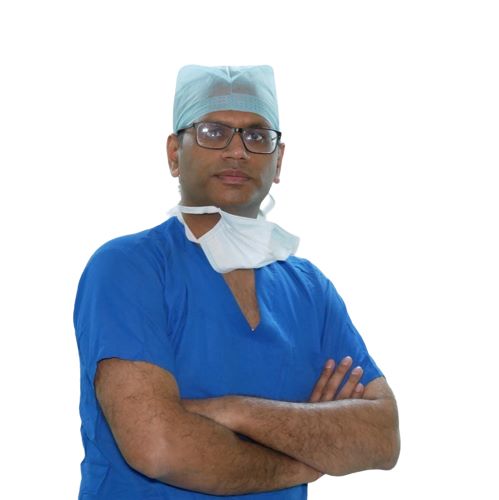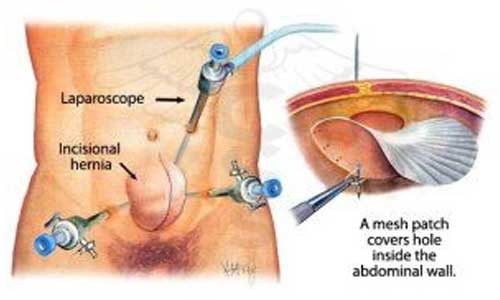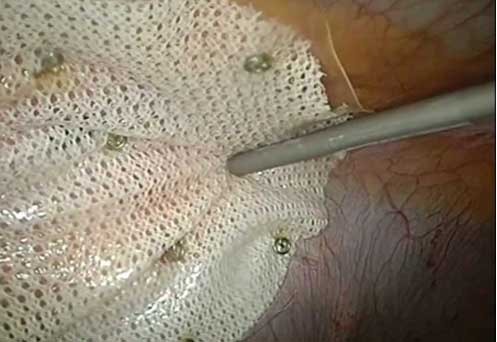
Lap Umbilical Hernia
Umbilical hernia repair surgery is a procedure that fixes umbilical hernias. An umbilical hernia involves a bulge or pouch that forms in the abdomen. This type of bulge occurs when a section of the intestine or other abdominal cavity tissue pushes through a weak spot in the abdominal wall near the belly button. It can develop in young children and adults.
In rare cases, adults with umbilical hernias can develop a serious condition called strangulation. Strangulation occurs when the blood flow to the herniated tissue is suddenly cut off. This can occur in umbilical hernias that are non-reducible, or can't be pushed back into abdominal cavity.
Symptoms of strangulation include nausea, vomiting, and severe pain. The area around the umbilical hernia might look blue, as if you have a bruise. The herniated contents could also become nonfunctional and die if they're strangulated.
Laparoscopic hernia repair is a less invasive procedure. The surgeon makes several smaller incisions around the hernia bulge site. Then they insert a long, thin tube with a lighted camera on the end into one of the incisions. This instrument is called a laparoscope. It allows the surgeon to see inside your abdominal cavity on a video screen.
Regardless of the type of surgery, the goal of the procedure is the same. The surgeon gently places the bulging intestine or other intra-abdominal tissue and abdominal lining back through the hole in the abdominal wall. Then they sew the hole closed. Then they insert a synthetic mesh material into the abdomen to strengthen the area.
Laparoscopic umbilical hernia repair with combined herniorrhaphy and intraabdominal mesh fixation using absorbable sutures offers the ideal outcome with low recurrence, and lesser complication of infection seroma formation, and chronic pain with reduced cost of procedure.
Laparoscopic repair of umbilical hernia (LRUH) is gaining increasing popularity due to its low recurrence rate, short hospital stay, and low complication rate. Laparoscopic repair of ventral and incisional hernia has become the standard treatment nowadays.
In the laparoscopic technique, the mesh is placed in an intraperitoneal location and less often in the preperitoneal location, where the rise in the intra-abdominal pressures is totally diffused along each square inch of the mesh and not along a tenuous suture line, as happens in conventional suture repairs. An increase in the intra-abdominal pressures thus helps to keep the mesh in place rather than displace it, as is the case in conventional overlay repairs. The laparoscopic approach affords the surgeon the ability to clearly and definitively define the margins of the hernia defect and to identify additional defects that may not have been clinically apparent preoperatively. One of the key determinants to a high recurrence rate following conventional repairs is the phenomenon of occult hernias. These are the hernias liable to be missed during an open repair.
Finally, it stands to reason that a wide overlap of the defect with mesh would help to prevent the intra-abdominal forces from displacing the mesh into the defect. The laparoscopic approach allows for easier placement of a larger prosthesis with good overlap. In the open approach, attaining an overlap of 3 to 5cm requires extensive soft tissue dissection, with resultant increase in wound complications. This advantage is more prominent in obese patients and those with larger defects


